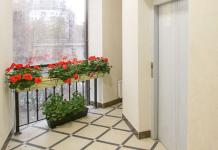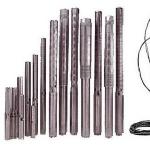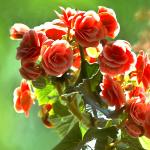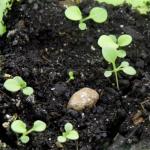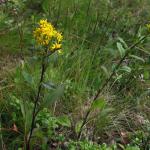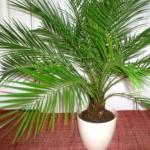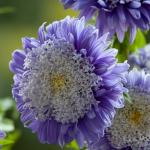For the first time, plants began to be grown in greenhouses or flowerpots during the time of the Great Geographical Discoveries. Almost all domestic cultures appeared in the homes of people from distant lands. Each of them requires a special approach: one needs shade, the other sun. Some fauna require abundant watering, and some prefer drought.
Contents of the catalog of indoor plants and flowers:
In order for flowers to please the gardener with lush flowering, beautiful greenery, you need to know the rules and master all the nuances of caring for crops.
Today, indoor flowers, the catalog with photos and names of which is presented below in our article, pleases with its choice and variety, allowing each grower to grow a plant on the windowsill that is most suitable for his taste and conditions.
The most beautiful blooming indoor flowers photos and names
In nature, there are many home crops grown on windowsills. This section presents flowers with bright inflorescences that do not stop blooming almost the whole year.
Begonia
Not a capricious indoor plant blooming all year round. Begonia blooms with lush inflorescences with due all year. The flower loves light, undemanding to the soil, temperature conditions. In the summer it is taken out to the loggia without harm to health. Propagated by cuttings. To make the culture lush, it is cut off.

Abutilon
Thanks to the leaves, the home flower was called “indoor maple” among gardeners. The plant is not whimsical, requires constant, economical watering, good daylight. The best soil for a flower is deciduous humus with sand, turf, mature manure. For abundant flowering, abuliton is fed with superphosphates, saltpeter. In the spring will require pruning. Propagated by cuttings.

Hibiscus
A picky indoor shrub that grows in houses up to 2 m. It blooms from spring to autumn with large whitish, bright red, pink flowers. The plant is sun-loving. Requires good watering in summer. In winter, the culture is kept at a thermometer mark of 16-17C. Propagated by cuttings. Suitable soil: humus / peat, sod, some sand. In spring, the flower is pruned to form the shape of a bush.

Anthurium
The plant is divided into decorative and deciduous crops and flowering plants. Blooms light red, crimson, red. He loves light and the division of the thermometer is not lower than 18C, moderate watering. Flowers do not mind watering. They are planted by cuttings, cutting off the side stems. The substrate must be drained.

Clivia
Indoor flower is characterized by dark green leaves. During flowering, a long pedicel with yellow-orange buds forms on it. The plant tolerates shade. With top dressing, clivia will bloom even in a dark room. The culture is propagated by root "children", separating them from their parents and planting them in a substrate of sand, turf, and leafy soil.

indoor roses
An ornamental plant that prefers abundant lighting, does not tolerate overheating. Home flowers come in a variety of colors. After the acquisition, the culture is immediately transplanted into nutrient soil. In favorable conditions, the rose blooms all year round with a short break.
The flower is well related to watering, it is important not to allow the soil to dry out. Feed the indoor rose every two weeks. Prune the plant by removing faded buds, dry leaves and branches.

Pelargonium
It blooms with bright exotic balls (rest period November-February). The plant is native to South America. In total, there are from 280 to 350 species. The essential oil of the flower kills harmful bacteria, helps purify the air in the house. Culture is not whimsical in care, loves the light. Pelargonium is watered moderately without waterlogging. To prevent the flower from stretching, it is cut in the form of a neat bush. Propagated by seeds and cuttings.

Kalanchoe
The most amazing indoor flower. Considered a succulent. Homeland is Madagascar, Australia, southern Africa. All are grown in pots. The plant is sun-loving. The temperature for growing Kalanchoe in summer is 20-25C, in winter - 15-18C. Water the plant rarely, but plentifully. Feed with fertilizer for cacti. Prune after flowering. Reproduction occurs by seeds, cuttings, "kids".

Saintpaulia
Another name for the flower is uzambar violet. Refers to perennial herbaceous plants. Small exotic indoor flowers tolerate shade and are unpretentious. Blooms almost all year round. The plant is native to East Africa. Today, the originators have bred many varieties and types of flowers that differ in external features. The best conditions for growing crops: temperature 16-24C, humidity 60-70%, no draft. Water the "queen of flowers" sparingly (possibly in a flowerpot tray). Spraying is contraindicated. Propagated by small bushes.

Non-flowering indoor plants photos and names
After looking at catalogs with photos and names of indoor flowers, you can see that all non-flowering plants look beautiful. They do not need to spend strength on flowering, the formation of buds and inflorescences. All their forces go into decorativeness, filling the trunk, leaves, crown with forces.
fat woman
The houseplant has a dense, stiff trunk, fleshy green leaves. It is grown in the shade and in the sun, although it does not tolerate the direct rays of the sun. Unpretentious care. Does not need abundant watering and spraying. To make the leaves shine, they are wiped from dust. Another name for a fat woman. According to Feng Shui, a home flower brings prosperity and well-being to the house.

Dracaena
The culture belongs to the Dracenovye family. The flower is divided into two groups: tree-like and bushy. Plants do not require abundant watering, spraying. The exception is the period of the heating season. Dracaena leaves are narrow in the form of a saber, wide and long. In appearance, the indoor flower resembles a palm tree, but in fact, it has nothing to do with them.

Aglaonema
Home flowers of the aroid family. In nature, there are several varieties. Some of the species produce flowers and fruits. Many gardeners appreciate the plant for its bright and unusual leaves with silvery veins inside. Therefore, for those who are interested in catalogs with photos and names of indoor plants and flowers, this is perfect. The culture grows slowly, does not require abundant sunlight. It does not need spraying, except for a period of increased dryness, in other words, in winter.

ficus
Not flowering culture. In care, the plant is not too demanding. It tolerates shady window sills. Watering is recommended to be increased in the summer, and during the rest period, in winter it is reduced. They feed the indoor flower with fertilizers for fixes, standard mineral complexes. This is done from Vienna to mid-autumn.

Fact! Buddhists consider the culture to be a sacred plant. You also need to buy ficus flowers for those who dream of becoming a parent. It is said that culture contributes to the birth of a child.
Monstera
Depending on the care and life expectancy, the flower can be in the form of a branchy bush or a small tree. Umbrella large leaves perfectly fill the air with ozone and decorate the room.
The plant does not like direct sunlight, grows well in the shade. Sometimes it is sprayed. Also, the monstera is wiped with a damp cloth from dust. The culture copes well with low temperatures. It is optimal to put a flower in a room with a temperature of 10-14C in winter.

Coconut weddell
The shape of the indoor flower is a reduced copy of a real palm tree that bears coconuts. The culture grows slowly at home up to 1.5 m. The pot is needed free for the comfort of the roots. The plant prefers light and warmth. Direct sunlight is recommended to be avoided.

Alocasia
An expressive houseplant, in recent years, gaining a special prevalence. Some varieties have medicinal properties, but it is extremely forbidden to treat yourself, because the culture is toxic. The people dubbed it the name "elephant ears" because of the size, shape of the foliage. Tropical evergreen culture with large leaves (grow up to 70 cm). Depending on the type, the home flower has a different color of leaves: copper-green, flowery with whitish spots, wavy edging with a silvery rim.

Aloe
Another name for the flower is agave. The plant belongs to medicinal succulent flowers that love sunlight. Recently, the fashion for this beautiful culture is returning. It does not need to be watered often otherwise the roots will rot. It is best to put the plant on window sills or a glazed loggia. In winter, aloe create artificial lighting, as it can lose its decorative effect, stretching uphill.

air
Perennial of the Airaceae family. Cereal and herbaceous varieties are commercially available. The homeland of the plant is Japan, East Asia, where it grows in shallow water and swampy areas.

The flower is characterized by narrow leaves collected in a heaped bunch. The length of the leaves is 45 cm. Depending on the litter, the color and length of the leaves differ.
Poisonous indoor flowers and plants photos and names
This section of the catalog of indoor flowers and plants contains some home cultures that are distinguished by their beauty in combination with toxicity. For a detailed acquaintance with the representatives of the flora, their photographs and names, read our article in full.
Cyclamen
People are sure that it drives away fears, bad dreams. It is often placed at the head of the bed. It should be noted right away that the flower is poisonous. Sometimes there is information that the juice of the root of the plant is dripped into the nose from sinusitis - this is a terrible mistake. The temperature may rise, the mucous membranes may burn, the throat may ache, and breathing will become difficult. Toxic parts of the flower: root system, seeds, juice that causes decay, irritation of the dermis.

Amaryllis beauty
Houseplant has toxic bulbs. They contain galantisine alkaloid. In a small dosage, lycorine provokes expectoration, in a large dose it provokes vomiting. If the leaf of the plant burst and released the juice, you need to treat your hands, do not rub your eyes.

dieffenbachia
Indoor flower can improve the air in the room. However, you can not put it in the bedrooms. The juice of the plant is toxic, especially the stem. It provokes respiratory disorders, the process of digestion, provokes burns on the dermis. If there are flowers in the house, it is optimal to take care of it with gloves.

Geranium
The plant is naturally useful. On the one hand, it acts as a disinfectant, relieves tension, pain in sore throat, otitis media. But there are people who suffer from allergic reactions after smelling the smell of geraniums. Also, a home flower is extremely dangerous for pregnant women, young children, people suffering from low sugar taking contraceptives.

cacti
Plants are not toxic, but only dangerous with their thorns. For example, the trichocereus cactus contains psychotropics that can cause CNS paralysis, its action is similar to that of a semi-synthetic psychoactive substance from the lysergamide family.

Rhododendron
Another name for indoor flower. The plant is picturesque, has lush whitish, pink, red inflorescences. Only leaves containing a toxic substance - a glycoside, which causes poisoning, are toxic in a room flower. Azaleas should not be kept in the bedroom. Flowerpots with a plant are placed in places protected from "smaller brothers", children.

Ivy
A shrub similar to a liana. Belongs to the Arali family. The leaves are dark green with a carved border, the stems are long and curved. The flower has toxic berries, leaves when ingested by the human body. Cats are especially affected by ivy. They are attracted by the savory greenery of the culture.

Croton
Belongs to the milkweed family. One of the well-known, widespread flowers among gardeners due to the large leaves of unusual colors. The plant is toxic because of its seeds, juice. Poisonous liquid appears when the leaves and stem are damaged.

Spurge
Widespread indoor flower. Euphorbia looks like a small palm tree: dense green leaves are placed in a bunch at the top of a thick stem. Seeds, juice are poisonous in culture. During transplantation, all the rules of caution should be observed.

Brunfeelsia
The plant grows in Europe and the USA. Refers to nightshade. It smells great and blooms with bright lilac inflorescences.

All parts of the culture are poisonous. Especially a lot of poison is contained in the seed material, fruits.
Bulb houseplants photos and names
The catalog contains indoor flowers with shoots in the form of bulbs. It is in them that plants accumulate useful substances. Many crops drop their leaves completely during the rest period. Most of the domestic representatives of the flora have beautiful and large flowers. Only a few are valued for the unusual shape of the leaves.
Gemanthus
The culture grows in Africa. It grows up to 30-40 cm in height. It is distinguished by shaggy inflorescences. It blooms in red and beige, usually in spring and summer. From one bulb grows 2-6 sheets of fleshy or transversely leathery. At home, only hybrid species are found.

Weltheimia
The flower grows up to 60 cm with large roots, with bare, poured stems, mundane leaves. A pedicel with dense racemes of red, pink, yellow tones blooms in a cool room from January to March. The inflorescence is peculiar, spectacular. Depending on the conditions of detention, it can live from 1 to 5 years.

Freesia
All varieties of houseplants are fragrant. It grows 30-45 cm in length. Pedicels are pale orange, yellow, bright red, purple, whitish.

hymenocallis
The home plant is distinguished by unusual, original white buds, presented in the form of an umbrella, on which dozens of flowers form. The culture smells good. The plant belongs to unpretentious indoor flowers. Grow it in different conditions (in a dark room it will refuse to bloom). From the Greek name of the flower hymenocallis means "beautiful film". After looking at the photos from the catalog, you will understand why it was called that.

Gloriosa
This is a thin-stemmed crop that requires a garter to a support. A dwarf houseplant rarely grows above 30 cm. The leaves are ovate. The legs are long. Pedicels of pale yellow, red-green, purple, crimson hue appear on their top.

Eucomis
The people call the flower "pineapple", because. its inflorescences look like an extraordinary fruit. In height, the plant grows up to 70 cm, blooms only after the appearance of 6-8 leaves. Peduncles look like small bells of a white-yellow or green-pine forest hue. In order for the culture to bloom rapidly, it is recommended to place it on the south side, darkening from the direct rays of the sun.

daffodils
It grows up to 20 cm. It has linear leaves, stems without leaves. On one pedicel, 2-10 flowers of different sizes and colors can be formed.

The flower is characterized by a delicate aroma. Grows both in a pot and in open ground.
Curly indoor flowers photos and names
If you decide to get pets growing on the windowsill, but you can’t make a choice, a catalog of indoor flowers with photos and names will come to your aid. Having studied in detail the information about the flower you are interested in, you can make the right choice.
cissus
A common, not capricious plant. It is a relative of the vine. The culture is characterized by green leaves with silvery dots. May be pink on the back. So that the shoots do not break, they are hooked onto supports.

Scindapsus
Curly indoor plant that does not require special care. Grows in any conditions. The culture has green leaves with light spots. The leaf is shaped like a heart. It grows rapidly, forming new stems. In order for the shoots to be lush, the flower needs to be pinched.

Philodendron clinging
Characterized by green leaves in the shape of a heart. The length can vary from 10 cm or more. The stems of the flower are thin and creeping. To make the philodendron bushy, it is tinted, and the stems are tied to a support. Some varieties of creepers are similar to scindapsus, but there are no light stripes on the leaves. Young leaves are red on the reverse side.

Hoya
As the name implies, the flower refers to the home liana. Leaves are scaly. Differ in unusual pedicels. At home it can grow up to 3 m in length. During the fertile period, it can bloom for several months. At this time, it is better not to rearrange the plant so that it does not throw off the buds and flowers.

Passionflower
perennial culture. An indoor flower grows up to 8 m in height. The plant is characterized by strong stems, covered with dense green glossy leaves. Depending on the variety, they may differ. Liana blooms densely and for a long time. The size of the flowers is different, reaching up to 15 cm. The color of the inflorescences is white, pink, crimson, burgundy-lilac. Propagated from seeds.

ivy curly
Curly culture with beautiful leaves. They cling to it by supports, decorating windows, empty surfaces in the house. Leaves can be patterned or plain. Thanks to the originators, hybrid ivy species with leaves of the usual shape and color were bred.

Ampel houseplants and flowers photos and names
This catalog with photographs of indoor flowers contains cultures that differ in appearance. They curl, and their shoots often hang from the pot. Therefore, plants are often grown in hanging flowerpots.
Akalifa
The plant belongs to the Euphorbiaceae family with unusual flowering. Australia is considered the birthplace of culture. Translated from Latin, akalifa means "nettle" due to the similarity of the leaves. Flowers are popularly called "fox tail". The leaves are presented in the form of an elongated oval hanging from the shoots. Inflorescences are interesting, purple-red tone. It can grow up to half a meter in length.

Another type of this plant has golden-purple oval-shaped leaves up to 22 cm long. Inflorescences are small up to eight centimeters, red.
Campanula (Bride and Groom)
The flower is very popular among gardeners. The plant got its romantic name because of its delicate flowers (blue, white, lilac). Culture is like bluebells. Today, many species are cultivated and used in indoor floriculture.

Alsobia
Groundcover, creeping perennial with red and soft stems. Belongs to the Gesneriev family. The plant is native to the shady forests of South America. Many hybrid varieties have been cultivated and grown in homes. Their length reaches two meters.

The leaves of the flower are oval green. On the upper part, dark veins are noticeable, a lot of villi. Single inflorescences look like tubules with a velvet edging. Most often their color is white or with red spots. The length of the tube can grow up to 6 cm, the diameter of the flower is 2.5 cm.
Netcreasia purpurea
The evergreen perennial has succulent shoots up to 1 m. The indoor flower is characterized by broadly lanceolate leaves up to 10 cm in length. The front side of the leaves is purple-green; the wrong side is purple with a fringe. Blooms for a long time from mid-spring to late summer. The inflorescences are small pink-violet with three petals, collected in miniature inflorescences at the ends of the shoots.

Neoalsomitra sarcophylla
Evergreen indoor plant. Perennial. The shape of the flower is spherical up to 15 cm in diameter. Shoots with antennae grow up to 4 m. The antennae twist into a spiral, while their tips bifurcate and have suction cups. With their help, the plant clings to the support. Leaves are oval, smooth. Flowers unisexual cream or cream green. Female types are solitary, male ones are part of small inflorescences.

Decorative indoor flower. Basel representative. It occurs naturally in the USA, India, New Guinea, Africa and the Pacific Islands. Another name for the house flower is Malabar spinach.

Basella is a creeper that loves warmth. Leaves are ovate or heart-shaped with a sharp tip. Grow up to 12 cm. The foliage has a delicate aroma.
Unpretentious indoor plants and flowers photos and names
Among flower growers, indoor plants that do not require special attention are quite popular. In nature, there are more than a dozen of them. They are perfectly accustomed to home growing conditions. They do not require special care skills. You do not need to spend a lot of time taking care of the mini garden. You decide on your own the plants most suitable for your life.
If you want to pick up an indoor flower from our catalog that will delight you with abundant flowering all year and even in winter, then we suggest that you read the article to the end and find out which flowering or ornamental plants that are unpretentious in care are best grown at home.
Domestic flowers of the madder family. In its natural environment it is found in India, Japan, China. Today, up to 250 plant varieties are known. Lush shrub 50 cm high, covered with large white, double flowers similar to roses with a pleasant aroma. The leaves are shiny, dark green. The plant belongs to those species that bloom even with a lack of sunlight. The culture blooms from July to October.

Saintpaulia
The flower resembles a violet. The main difference is thermophilicity and unpretentiousness. Saintpaulia is a small shrub with lush leaves and large flowers. Beautiful leaves are covered with villi. With their help, she perfectly tolerates the lack of water.

Hamedorea
The house plant belongs to palm trees. Grows slowly. Excellent for growing in the shade. In order for the flower to be lush and bright, you need to wash it in the shower, spray it on summer days. In addition, the sun's rays are painful for the culture, so in hot weather they are darkened.

rapis
Indoor, shade-loving palm tree. It has a high decorative effect with proper care. In nature, there are 2 types of flowers: high and low. In room conditions, undersized species are more often grown. Their height is up to 1.5 m. At the same time, the flower is compact, while tall varieties reach three meters.

Despite the fact that the plant quickly turns green in natural light, it is adversely affected by the direct rays of the sun. It is optimal to put the flowerpot in partial shade. The flowerpot is occasionally turned to form the correct crown. The flower tolerates room temperature perfectly; in summer it is put on the balcony. Irrigation remains a separate issue in growing crops. The soil should always be moist, drying out and excessive moisture should not be allowed.
Fatchederalize
Evergreen liana with unusually shaped leaves. Its flexible shoots are often used to decorate vertical surfaces in the house. The ability to grow in shady places makes the flower indispensable in interior design. But, despite such a wonderful indicator, it is recommended to put the culture on a lighted windowsill. They usually contain the plant at room temperature, but with the advent of winter it is better to send it to a cool place. During the growing season, the flower is provided with good watering, but overflow should not be allowed.

Begonia
The indoor flower is not only considered the most beautiful due to flowering, but also not whimsical. Any soil is suitable for the plant. In addition, begonia tolerates temperature extremes very well. But for lush flowering, she needs sunlight. In summer, the plant is taken out to the balcony, leaving it there overnight.

Spathiphyllum
The people called the home flower. The culture has sharp leaves and sail-like white flowers. Perfect plant for growing on the north side. Also, the plant needs to provide moisture. Watering and irrigation are two components of a beautiful flowering culture. During the flowering period, all wilted buds must be removed.

Having studied the photographs, having examined the types and names of indoor plants in the site catalog, a professional gardener or amateur can independently choose the most suitable flower for himself. Since each plant has a different care requirement when grown at home.
Now the monochrome garden is in trend. Therefore, when choosing plants, you can stop at several copies of the same color (for example, various shades of raspberry and pink). The romantic pink color of the plants will make the flower garden exquisite and delicate.
There are quite a lot of pink garden flowers, so it is not possible to list them all. We have collected the most beautiful and popular plants that look great in a flower bed and do not require careful care.
1. Agrostemma, or cockle (Agrostemma)
This sophisticated annual plant is characterized by low growth (up to 50 cm high). On thin stems are narrow pubescent leaves and rather large pink-crimson flowers with five petals. These delicate "stars" bloom in early summer and adorn the garden until September. At the same time, they open in the morning, and close in the afternoon.
Plant care is minimal. It is enough to sow the seeds in open ground and then thin out the dense shoots. The dense greenery of the agrostemma perfectly blocks weeds, this allows you not to carry out frequent weeding.
2. Aquilegia, or catchment area (Aquilegia)
This herbaceous perennial is remarkable due to the bizarre shape of the inflorescences. It will become a worthy decoration of any flower bed. In the middle lane, alpine and ordinary aquilegia are usually grown. Plant height varies by variety. Aquilegia loves shady places, but also feels good in the bright sun.
Both winter (October-November) and spring sowing (April-May) are practiced. Flowering usually occurs in the first half of summer.
3. Anemone, or anemone (Anemone)
Anemones are both rhizomatous and tuberous. At the same time, the former are less whimsical than the latter. It is only necessary to monitor the level of humidity: an excess and a lack are detrimental to the root system of the plant.
The color of the anemone is varied, but all flowers prefer partial shade. Also an important condition for growing is fertile, loose and non-acidic soil with good drainage.
4. Armeria
This perennial has about 90 species. The color of the flowers is white, pink, raspberry, lilac, red. Plant height, depending on the species and variety, ranges from 15 to 60 cm. On a straight stem there are numerous linear-lanceolate leaves collected in a basal rosette. Small flowers collected in capitate inflorescences adorn the plant in May-August.
Armeria is usually grown from seeds: with a seedless method, seeds are sown before winter, and sown for seedlings in late February - early March. In addition, armeria reproduces well by self-sowing.
5. Aster (Aster)
The pink color of the flowers is found among both annual and perennial asters. These fluffy stars are able to decorate any flower garden.
Plants reproduce well by seed. When growing asters in seedlings, seedlings are transplanted into open ground in mid-May (they are not afraid of frosts down to -4 ° C). To do this, choose a well-lit place with deep groundwater. Plants are planted in grooves made at intervals of 45-50 cm.
Seeds can be sown in May immediately in open ground. They are lightly sprinkled with soil, watered and covered with a film until shoots appear. Seedlings with 4-5 true leaves are thinned out (strong ones are transplanted to another flower bed).
6. Carnation (Dianthus)
Pink and crimson flowers occur in carnations of the Alpine, Amur, bearded, capitate, pinnate, Chinese, grass, Shabo and other species. This popular plant has many faces, so everyone can choose a flower to their liking.
As a rule, carnations are undemanding to soils, resistant to diseases and pests, winter well without shelter, unpretentious care, but bloom better in well-lit areas and with regular watering.
7. Dahlia (Dahlia)
Dahlia is distinguished by a wide palette of colors and a variety of flower shapes. The plant blooms from July to autumn. For good growth and lush flowering, you just need to choose the right planting site, provide suitable soil, timely watering and top dressing. Buy tubers should not be earlier than mid-spring, they should be fleshy and strong. And patient flower growers can try growing charming dahlias from seeds.
8. Geranium, or crail (Geranium)
Among geraniums, you can find plants with pink, bright crimson, red, purple and white flowers that do not fade all summer. The stem of the plant reaches a height of 30-70 cm. Five-separate serrated leaves adjoin it, which are also very decorative.
9. Gladiolus, or skewer (Gladiolus)
Even beginners are familiar with these popular colors. Thanks to the high and dense peduncles, gladioli are ideal for cutting. The color of the flowers is different, and there are many shades of pink.
Gladioli love light, draft-free areas with well-drained soil with an acidity level of pH 6.5-6.8. For the winter, plant bulbs are dug up and stored until spring in a basement or cellar at a temperature not exceeding 5-10 ° C and a humidity of about 60-70%.
10. Dicentra, or broken heart (Dicentra)
Dicentra is white, pink, raspberry, red. These unusual little hearts (up to 2 cm in diameter) decorate the flower bed in summer. The flowering period of the magnificent dicentra lasts from early May to mid-June, and, for example, the beautiful dicentra pleases the eye from early summer to autumn. After flowering, the aerial part of both "fall asleep" until spring. Sometimes dicentres re-bloom in August-September.
The flower grows well both in the sun and in partial shade. The plant prefers light, nutritious and drained soil.
11. Canna
This stately flower (up to 3 m high) pleases the eye from June to late autumn. The leaves are large, elliptical or oval-oblong, pointed, (25-80 cm long and 10-30 cm wide), green, striped or purple-bronze. Flowers are red, orange, yellow, pink or white. They are located on tall stems and do not fade until frost.
Kanna is completely unpretentious, almost does not get sick and does not attract harmful insects, even if it is not treated with anything. However, in the middle lane it is not able to overwinter without good shelter. The plant comes from the tropics, so she does not like our harsh winters.
12. Cleome
For the unusual shape of the inflorescences, the Germans call this one- or two-year-old flower the spider plant. Flowering continues from June to September. And at this time, butterflies actively flock to the flowers. The height of the plant is about 90-180 cm, the width of the bush is 30-45 cm.
This culture loves good drainage, so sandy soils are best for it. Cleoma is frost-resistant, requires watering only in the summer heat.
13. Cosmos
The beauty of this terry miracle lies in the fact that the plant not only decorates the flower garden with bright inflorescences, but is also absolutely non-capricious. Just sow the seeds in the ground - and wait for the appearance of small daisies in the middle of summer.
15. Peony (Paeonia)
Peonies are white, pink, red, cherry and even yellow. All of them are beautiful thanks to large double flowers. But, unfortunately, they bloom not as long as we would like. But if you plant plants with different flowering periods, then you will be able to get a bright flower garden from late May to early July.
16. Rosa
This queen of the flower garden needs no introduction. Roses are varied in shape and color of flowers, structure of the bush, etc. But pink roses are a classic. And in each species there are varieties with such coloring of the petals.
All roses need good lighting, nutritious and loose soil, timely watering, fertilizing with complex mineral fertilizer and proper pruning. Most varietal roses in the middle lane hibernate only with shelter, but there are also winter-hardy specimens (for example, Canadian roses).
17. Phlox
Phlox delight with a variety of shapes, sizes and shades. Among them there are bush and ground cover species, spring and summer flowering. Phloxes with pink flowers can be found in almost every species of this plant.
This is the perfect flower for any flower garden. For rockeries and borders, low awl-shaped phloxes are best suited, and for mixborders and solitary plantings, paniculate ones are best suited.
18. Helon oblique, or pink flamingo (Chelone)
This decorative perennial came to us from America. In the people it is often called perennial snapdragon. Helon blooms from July-August until late autumn. The color of the flowers can be white, light pink, raspberry, reddish. The height of the plant depends on the species and can reach from 50 to 200 cm.
Despite its overseas origin, Helon is able to winter without shelter, even in the middle lane. The plant is only mulched with peat (10 cm layer) - that's all the preparation for wintering.
19. Stock rose (Alcea rosea)
This tall plant (up to 2 m) from the Malvaceae family is often called mallow by the people, but in reality, the stock-rose and mallow are different species, although they are closely related. In a stock rose, the corolla consists of 5 fused petals. In the center of the flower there are many stamens fused into a tube.
Classic varieties of stock roses are distinguished by simple pink flowers, and gardeners have already managed to fall in love with modern decorative varieties for large double flowers of bright colors: white, pink, red, burgundy, raspberry, beige, yellow, purple-black. Flowering lasts from early summer until late autumn, until a cold gusty wind breaks the stems of the plant.
20. Purple Echinacea (Echinacea purpurea)
This is not only an attractive plant, but also an indispensable assistant for strengthening immunity. The flower looks like a chamomile, but echinacea is quite easy to recognize by its characteristic convex center and drooping petals, which can be not only purple (in accordance with the name of the species), but also yellow, white, cream, red. This plant blooms from July to September.
Of course, this is not a complete list. It can be supplemented for a long time, because the pink color of flowers is very common among ornamental crops. What is your favorite flower with pink petals?
No comments yet
15 Best Perennials With Pink Flowers
The choice of perennials for landscaping the site is quite extensive. But when creating individual landscape compositions, sometimes it is required to select plants with the same color palette. For example, for landscaping romantic corners and for creating a garden in gentle colors, various shades of pink are very often used. The choice of such perennials is quite extensive. All of them according to the timing of flowering can be divided into spring, summer and autumn flowering. Companions to pink-flowered crops can be plants with a silvery shade of foliage (a classic of the “pink + gray” genre), with white, purple and, flowers.
pink perennials in spring
Badan thick-leaved (Bergenia crassifolia).
Also known as Mongolian tea And Saxifrage thick-leaved. Widespread perennial crop with large leathery rounded leaves. Blooms in spring with pink bell-shaped flowers.
Plant height usually does not exceed 50 cm.
Undemanding to the composition of the soil, but does not tolerate stagnant moisture, especially in the spring.
It goes well with aquilegia, daylilies, geraniums, irises. The most common varieties Abendglut", "Ballawley" And " Morgenrote".
Badan thick-leaved
Dicentra is magnificent (Dicentra spectabilis).
Also known by the popular name Broken heart.
Herbaceous perennial up to 90 cm high.
Characterized by erect, well-leafed stems and heart-shaped flowers. The flowering period is in May. It can successfully grow both in open sunny areas and in light partial shade.
Pairs well with daffodils, tulips and tulips. One of the most popular varieties - " Bacchanal".

Dicentra magnificent "Bacchanal".
Aubrieta cultural (Aubrieta x cultorum).
Perennial plant with small leaves.
The height of the bushes does not exceed 20 cm.
The flowering period is in May. Unpretentious and undemanding to growing conditions.
Can be combined with alyssums, styloid phlox and iberis. The following varieties are known: Barkers Double", "Gloriosa" And " Joy".

Aubrieta cultural "Joy"
Primula vulgaris (Primula vulgaris).
A hardy spring flowering perennial.
It is characterized by oblong-oval wrinkled leaves.
Plant height does not exceed 20 cm.
It blooms very early, in early April. Prefers fairly loose and nutritious soils.
Can be planted together with scillas, muscari, low varieties of irises. The following varieties are good: QUAKERS BONNET", "KEN DEARMEN", species pink primroses - Japanese, cortusoid, finely toothed and others.

Common primrose "QUAKERS BONNET"
Phlox subulate (Phlox subulata).
Perennial creeping plant up to 20 cm high.
It is characterized by small pointed leaves and flowers about 2 cm in size.
The flowering wave lasts from mid-May to the end of June. Grows best in poor soils.
They are used mainly in single landings at. Varieties: " Apple Blossom", "Daisy Hill", "Samson", Fort Hill.

Phlox subulate "Fort Hill"
pink perennials in summer
Astra alpine (Aster alpinus).
Perennial plant with strong stems about 30 cm high.
It has a basal rosette of oblong leaves. Basket inflorescences ranging in size from 4 to 5 cm. The flowering period occurs in June.
An undemanding plant, the main thing is a sunny location. It is combined with stonecrop, rudbeckia, irises. Varieties: " Rosea", "X Pink", " Ruber", "happy end".

Aster alpine "X Pink"
carnation pinnate (Dianthus plumarius).
A beautifully flowering perennial about 20 cm high.
It is characterized by gray leaves and oblong-linear leaves. Blooms in June.
It is not demanding on growing conditions.
It is combined with ornamental cereal plants, edelweiss. Pink-flowered varieties: " Highland Hybrids", "single mixed", "Roseus", "Sonata".

Carnation pinnate "Roseus"
Geranium blood red (Geranium sanguineum).
Creeping perennial up to 15 cm high.
The wintering leaves are light green. Flowers no larger than 2.5 cm. The flowering period is in July.
Widely used to create borders, lining flower beds. Recommended varieties: " Lancastriense", "striatum", "Nana".

Geranium blood red "Striatum"
stonecrop false (Sedum spurium).
Perennial with creeping stems and fleshy dark green leaves. Inflorescence corymbose type.
The flowering period is in July. Prefers fertile soil with good drainage and a sunny location.
Mainly used to create carpet compositions. Varieties: " Bronze Carpet", "Voodoo", "Splendens", "roseum".

Stonecrop false "Voodoo"
Feverfew pink (Pyrethrum roseum) and numerous garden forms and varieties derived from it ( Pyrethrum hybridum).
Otherwise, the popovnik is red or the tansy is bright red ( Tanacetum coccineum). In foreign catalogs, p.pink is presented under this name.
Herbaceous perennial up to 70 cm high.
It is characterized by an upright stem and dissected leaves. Flowers are baskets.
The flowering period is in June. Prefer moderately fertile soils and open areas.
It is combined with yarrow, bluebells and nivyanik. Varieties: " Brenda", "E. M. Robinson", "Lord Rosebery".

Feverfew pink "Laureen"
Dittany (Dictamnus albus).
A rhizomatous plant up to 80 cm high.
It is characterized by strong erect stems and rather large flowers of irregular shape. Flowering period from late June to July.
Grows well in any type of soil. It is combined with loosestrife, tenacious, kotula.

Dittany
pink perennials in autumn
Aster shrub (Aster dumosus).
Perennial with erect stems up to 50 cm high.
It is characterized by sessile leaves of a lanceolate form. The flowering period is in September. Requires moderate temperature and soil moisture. Feels good on fertile soils and sunny places.
It is combined with stonecrop, thyme. Varieties: " Venus", "Diana", "Lady Henru Maddok", "Granat".

Aster shrub "Granat"
Colchicum autumn (Colchicum autumnale).
Corms perennial, not more than 20 cm high.
The flowering period falls on the end of September-October. Requires loose fertile soil and a sunny location.
Looks spectacular against the background of the lawn, as well as separate curtains. Varieties: " waterlily", "Beaconsfield".

Colchicum autumn
Chrysanthemum Korean (Chrysanthemum x koreanum).
Perennial plants that, depending on the variety, can be up to 1 m high.
Flowers can be single or double. Flowering period from September to frost. Requires fertile loose soils.
It is combined with perennial asters, sage. Varieties: "Okishor", " pink dream", "Lelia", "Miss Zelbe".

Chrysanthemum Korean "Okishor"
Japanese anemone (Anemone japonica).
Herbaceous plant up to 80 cm high.
The size of the flowers can be up to 8 cm. The flowering period lasts from the second half of August until frost. There are no special requirements for soils.
Combines with sage and ferns. Varieties: "Bressingham Glow", "Koenigin Charlotte".

Japanese anemone "Bressingham Glow"
2017, . All rights reserved.
A garden filled with pink flowers will surely delight anyone who sees delicate inflorescences that stand out in bright spots in the green grass. It is not for nothing that it is believed that a person who loves such a scale is a dreamer who has managed to preserve childlike purity and optimism. A pink flower is able to bring a feeling of comfort, harmony and peace both into the room and into the garden. And its delicate coloring can revive any flower bed.
The article will describe the most popular flowers and shrubs that have different shades of pink. Choose!
A garden with pink flowers can't be sad
Romantics, of course, will like the garden, in which the flowers are selected in pink tones. He is very optimistic. Delicate pink flowers will make a crowded shady garden cheerful and calm, concealing a sad mood even in cloudy weather.
The choice of plants with flowers of various pink shades is extensive. You can, for example, plant bulbous spring plants - hyacinths, tulips, muscari, perennial firebrands. At this time of the year, the pink-white flowers of hellebore or thick-leaved bergenia will delight the eye. And in late spring and early summer they will be replaced by phlox carpets, shavings, joyful daisy flowers and, of course, rich peonies.
In summer, it is impossible to take your eyes off Echinacea purpurea, carnations, exquisite irises and diascia. Until the very frosts, perky asters and Korean chrysanthemums will color it.
Now let's look at these flowers in more detail.

Hyacinths and Muscari
A pink flower - hyacinth - is one of the most popular inhabitants of garden beds. It is planted in open ground at the end of September, at a temperature of 6-10 ° C. Before the onset of frost, the hyacinth manages to take root and, having wintered under the film, with the onset of warm weather, one of the first to sprout tender sprouts, and then bloom.

Another perennial plant, muscari, is considered a relative of hyacinth. Its flowers in pale pink and other shades are often used to make wedding bouquets. Gardeners love to place muscari in alpine slides. This plant is very unpretentious and can bloom well in both sunny and shaded places. The main thing is that the flowers are on a slight elevation, as they are afraid of moisture stagnation and can rot.
Brandushki, tulips and phloxes
Tulips are more unpretentious than hyacinths. They tolerate winter well, but love sunny and wind-sheltered places. And they delight the eye with a variety of colors - these can be yellow, bright red, white flowers, pink (you can see their photo in the article), even variegated.

As soon as the snow melts, the branches settle in the garden - quite vulnerable plants related to primroses. If planted in a group, they form a pleasing lilac-pink carpet that looks great in flower beds, especially in combination with violets and buttercups.
Even if you do not have the opportunity to worry about the variety of flowers in the garden, phloxes are able to decorate it with all shades of pink from spring to autumn. These plants are hardy and have a large supply of vitality. But they do not like close proximity to trees and shrubs with an extensive root system. Phlox in the struggle for light, water and food in this case loses.

Daisies and obrieta
Daisies are flowers especially popular with gardeners. Their small stature, terry inflorescences and a wide range of shades make this plant the main decoration of the garden. Yellow-pink daisy flowers will brightly color flower beds until October. With proper care, you can grow a whole flower bed of these sunny flowers from one bush.

And the evergreen obrieta is able not only to endure frosts, retaining its leaves and color, but also to delight you with a magnificent hat of racemose inflorescences. Each of her flowers - pink or any shade, from purple to blue - is small and modest, but together they make up a lush colorful pillow. This herbaceous undersized shrub grows in width, and leaves are practically not visible under its flowers.
Irises and Echinacea
The light pink flowers of Delilah iris proudly raise their unusual heads on tall, fleshy stalks. They can perfectly fill the gap between the flowering of early spring and summer plants. True, these beauties need to be tied up, as the height makes them defenseless against heavy rain and wind. Unfortunately, irises have a short flowering period - only 5 days, but their graceful leaves continue to decorate the flower garden all season long.

All summer long, a pink daisy-like flower, echinacea, will delight the eye. This is a very unpretentious plant that can survive in drought, and in severe frosts, and on poor soil. By the way, echinacea is distinguished by its medicinal properties, helping with gout, arthrosis, inflammation in the oral cavity and women's diseases.
Asters and Korean chrysanthemums
Flowers of pale pink, purple, lilac, raspberry and white - all this is the last hello of summer - asters. They start flowering in June and stay steadfast all season until October. These beauties are unpretentious and grow on any soil. Interestingly, asters have a unique inflorescence - it disguises itself as one large flower. Asters are bright and joyful flowers that can brighten up any garden.

And finally, in September, no less picturesque Korean chrysanthemums will please you. Their lush bushes will show off until frost. Chrysanthemum is a very popular flower - drought-resistant and photophilous. At its faded bushes, the entire aerial part is cut off, leaving only a small stump, which is spudded for the winter and covered with spruce branches. And in the spring, the remains of the stems and the central shoot are completely twisted, making it possible for the bush to resume from the side shoots.
Shrubs that bloom in spring
If the garden lacks brightness, then the shrub, which is covered with delicate pink flowers, will become the very highlight that will add variety and cheerfulness to its landscape.

Ledebour's almond, covered with a pink cloud of fragrant inflorescences from the beginning of spring, will give your garden a special spring tenderness. It will look especially impressive against the background of coniferous plants. Almonds do not like shading, but they tolerate drought well.
And the rhododendron, which has all shades of pink, will share with you the joy of the warm days that have come. By the way, in order for this heat-loving plant to survive the winter well, it is worth choosing the Katevbinsky rhododendron for planting.
Look luxurious and look like small roses bright pink flowers of garden camellia. By the way, this shrub is good both during the flowering period and without flowers - covered only with shiny dark green leaves.

Camellias are winter-hardy, but love moisture and prefer a shady location. Interestingly, these delicate-looking flowers are not afraid of frost at night, but it is dangerous to quickly thaw in the bright morning sun. This causes the flowers to turn brown and die. Therefore, when planting these ornamental shrubs, the eastern side should be avoided.
Shrubs that bloom in summer
At the beginning of summer, an elegant weigela will bloom, densely covered with bell-like inflorescences. Its bright pink flowers can brighten up any garden. This shrub, by the way, is resistant to frost and can grow even on rocky slopes.
Hibiscus is able to impress any gardener with its large bright flowers. Each of them stays on the branch for only one day, but they continuously replace each other, making the shrub constantly flowering. The main condition for good growth and flowering of the named plant will be light. And if the climate allows, then the lavender bushes planted nearby will turn this corner of the garden into a paradise.

Spirea, which is sometimes called meadowsweet (although this is not entirely true), opens at the peak of summer. Spirea flowers are small, with long filaments of stamens, which gives them a special fluffiness. Curved, profusely covered with flowers, the branches of this shrub can add grace and sophistication to any landscape. If you choose varieties of spirea depending on the timing of flowering, you can achieve a continuous change of palette in the garden - from snow-white to pale pink. In addition, in the care of spirea is absolutely unpretentious.
What shrubs bloom in autumn
In early autumn, light pink flowers, similar to large pompoms, will cover the hydrangea bushes - and another beauty will appear in your rose garden, from which it is impossible to take your eyes off. She, of course, is somewhat capricious, and not very winter-hardy, but the effect of the beautiful round inflorescences can pay off all the trouble to care for this plant.

And the modest heather of the Radnor variety, although not as chic as hydrangea, will be able to delight you before the onset of cold weather with its charm and wonderful aroma. Heather loves sunny places and does not tolerate stagnant water. By the way, the life span of this plant with good care is huge - about 50 years!
The euonymus will bloom the garden with crimson flowers that open in summer, and with an openwork purple crown, which makes this shrub look like a brooch, with which the garden adorned its autumn outfit. By the way, even when all the leaves fly around from the euonymus, it will continue to delight the eye with colorful fruits that will remain on the branches until frost. Depending on the plant variety, they can be raspberry, scarlet, pink and burgundy.

A garden where all the flowers are pink
A photo of a garden with flowers in different shades of pink is a picture that will undoubtedly please the eye of a lover of beauty. But how much more pleasant it is to create this palette yourself - with love and warmth, choosing plants and caring for them!
Covering all the plants with a pink scale is an unrealistic task, but it seems that even those listed in this article will be able to tell you the direction in which you can move when creating your work - a delicate rose garden.
Delicate and romantic pink has always been associated with love and kindness. That is why psychologists recommend decorating window sills with plants endowed with inflorescences of various shades of this tone. The dwelling, in which flowering plants grow with pinkish buds, has a special warmth and comfort. What indoor plants are endowed with such flowers can be found in the article.
A flower with pink buds called fuchsia has been grown in homes for about 200 years. This is an amazing indoor culture, due to the unusual shape of the buds, some lovers call it a “Japanese lantern”.
Varieties and hybrids of fuchsia are full of variety, but the most delicate of them are necessarily endowed with pinkish petals.
The flower looks like this:
- A small bush with very flexible shoots.
- The leaves are oval, green or with a reddish tinge. Serrated at the edges.
- The drooping fuchsia bud is represented by a bright cup, in the center of which there is a bunch of long stamens and a horizontal corolla with bent edges.
 Fuchsia
Fuchsia Shoots can take any form. With the help of various supports, fuchsia can be grown as an ampelous, bushy, pyramidal or standard plant.
Oleander is also a flower with pink flowers, although the coloration of different varieties is different. In another way, it is called pink-flowered laurel. The photo always shows a resemblance to this noble plant. You can describe the flower like this:
- In the room, the bush can reach 2 m.
- Glossy leaves, very similar to bay leaves.
- Buds are simple and terry. When opened, they emit a very delicate, pleasant aroma.
Attention! The juice of the oleander plant is poisonous, so you need to work with it carefully, while wearing gloves.
Cyclamen and Azalea
A flower with pink flowers, cyclamen or dryakva pleases with the appearance of buds in late autumn and winter. In summer, in hot weather, the aerial part of the plant dies off, and its tuber "sleeps". In general, the flower looks like this:
- The rounded tuber is almost completely hidden in the soil.
- In the center of its aerial part, a rosette of many leaves grows at the end of summer.
- In the center of the "bouquet" are flower stalks.
- The flowers are very bright, interesting shape, reminiscent of butterflies with raised wings.
- Petals come in a variety of colors - it depends on the variety. In most varieties, they are pinkish tones of varying intensity.
 Cyclamen
Cyclamen After the bud opens, the petals are held for about 10 days. Up to 100 buds are formed on one plant per season. Cyclamen does not require complex care. The main thing for its normal growth and development is to provide a cool temperature.
Azalea - this flower with pink flowers belongs to rhododendrons and also enjoys a special arrangement of flower growers. Some call it the most beautiful flowering plant that can be grown in a room.
Azalea can be described as follows:
- Strongly branched, low bush (up to 30 cm tall).
- The leaves are elongated.
- Azalea flowers can be simple and double.
- Petals are corrugated and fringed. Their color depends on the variety, but most often these are all kinds of shades of pink.
 Azalea
Azalea Just like cyclamen, azalea requires coolness. Under normal room conditions, a pot culture brought from a greenhouse quickly dies.
Advice. By separating the space on the windowsill from the room, for example with plywood, glass or plastic, you can create suitable conditions for cold-loving flowers.
Mandevilla and geranium
A very interesting flower with pink flowers, which is grown in a room like a creeper. With a suitable support, the mandeville can be given any shape.
The appearance of the mandeville is as follows:
- Stems curly, very long (up to 3 m).
- The leaves are elongated, shiny, slightly corrugated.
- The buds are simple, in the form of a gramophone. Consists of 5 petals.
- The flower is yellow in the center.
 Mandevilla
Mandevilla Mandeville is not demanding. She loves light, warmth and moderate watering.
The well-known geranium, which has been grown on window sills for a very long time, is also rich in varieties with pink petals.
Geranium looks like this:
- Branched bush with low shoots. There are ampelous types.
- The leaves are rounded with edging.
- Flowers simple and double. Their size and color depend on the cultivar.
- A huge variety of varieties have been bred that have inflorescences in pink tones.
- Culture is not demanding to care. Feels great both in the room and on the balcony and loggia.
You can always create a certain atmosphere at home with the help of indoor plants. If most of them are endowed with rose buds, then romance and love will always be felt in the home.
Pink anthurium: video

